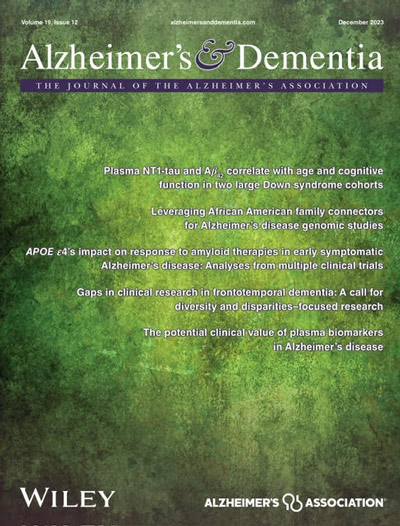Association of neighborhood disadvantage with cognitive function and cortical disorganization in an unimpaired cohort: An exploratory study
Abstract
INTRODUCTION
Neighborhood disadvantage has been shown to impact health and cognitive outcomes, while morphological similarity network (MSN) can elucidate structural morphological patterns underlying cognitive functions. We hypothesized MSNs could provide cortical patterns linked with neighborhood disadvantage and cognitive function, explaining the potential risk of cognitive impairment in disadvantaged neighborhoods.
METHODS
For cognitively unimpaired participants from the Wisconsin Alzheimer's Disease Research Center or Wisconsin Registry for Alzheimer's Prevention (n = 524), and the Alzheimer's Disease Neuroimaging Initiative (ADNI) cohort (n = 100), neighborhood disadvantage was obtained using Area Deprivation Index (ADI) and its association with cognitive performance and MSN features was analyzed using linear regression and mediation analysis.
RESULTS
Neighborhood disadvantage was associated with worse cognitive performance on memory, executive function, processing speed, and preclinical Alzheimer's tests on both datasets. Local morphological organization of predominantly the frontal and temporal regions showed association trends with ADI.
DISCUSSION
Morphological patterns associated with ADI, in-part, may explain the risk for poor cognitive functioning in a neighborhood disadvantaged population.
Highlights
- Social determinants of health such as neighborhood context can be studied using ADI.
- High neighborhood disadvantage was related to worse performance on category fluency, implicit learning speed, story recall memory and pre-clinical Alzheimer's cognitive composite.
- In this exploratory study, using morphological brain networks that indicate similarity in distribution of cortical thickness between regions, we observed that centrality of predominantly frontal and temporal regions was marginally linked with neighborhood disadvantage status and also partially mediated its association with preclinical Alzheimer's composite test.
- There is a potential role for considering neighborhood status in early screening of cognitive impairment and dementia.


 求助内容:
求助内容: 应助结果提醒方式:
应助结果提醒方式:


